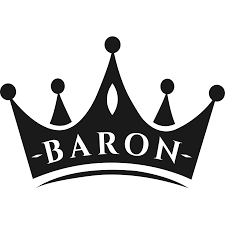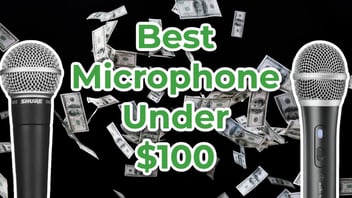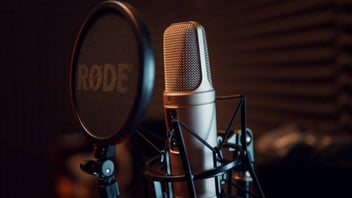
What is ASMR?
ASMR stands for Autonomous Sensory Meridian response, which is a neurological response to certain audio and visual triggers. The body receives information from the brain about what it’s experiencing through touch, temperature change, pressure, movement, vibration, sound, taste, smell, and sight. It then interprets this information into an emotional and physical response. This response can be anything from feeling relaxed, happy, calm, content, sleepy, excited, anxious, or even scared.
The most common trigger of ASMR is whispering or speaking softly and gentle tones. Other triggers include tapping, hair brushing, massaging, listening to music, watching someone paint, reading or writing, drawing, playing with small toys, looking at maps, eating food, etc. ASMR, in recent years, has exploded in popularity, and with more YouTube videos, podcasts, and audio experiences coming out. The genre has been growing extremely fast, and with better microphones, the experience only gets better.

What Is an ASMR Microphone?
An ASMR microphone is a specific microphone needed to pick up fine noises. Typically these are binaural microphones that allow audio to migrate from ear to ear in a natural tone. Microphones used in ASMR also produce a very high sound quality allowing listeners to enjoy a full audio experience. These microphones have become increasingly popular over the last few years as they give viewers and listeners a completely immersive experience. The goal is to provide an intense human listening experience for your audience. The reason I say human listening experience is because, unlike many other forms of entertainment ASMR is mainly digital and the audience will typically be focused deeply on the sounds they hear and experience. They will also be listening to them in a much more controlled setting with headphones as opposed to a car or a busy environment. The goal is to cut out slight noises that can ruin the listening experience.
How Do I Get Started With ASMR?
If you're just getting started, the first thing you're going to need is a microphone. This blog covers microphones that I have personally tested and believe they excel for ASMR artists. When you're first starting out you will want to listen to your recordings yourself and see if they are triggering you like you want them to trigger your audience. There are several ways you can start your journey with ASMR.
Additionally, there are many different apps available now that will let you record your own sounds and upload them to YouTube. For example, you can use Garageband for apple products, audacity is a free program that works for windows users, and if you want higher-end professional software, adobe auditions is a great option.
Things to Consider Before Buying ASMR Microphones
1) What Is My Budget?
Before spending money on microphones, the first thing to think about is how much money you have to spend. If you don't have too much money to play around with, plenty of affordable options exist. However, if you're looking for something really good, you might want to save up a little bit more money. There's a huge difference between $100 and $400+ microphones.

2) What Equipment Do You Plan On Buying
With microphones, there are two main kinds. USB and XLR. They both serve their purposes, and each one has its advantages. With USB mics, you lose some quality in exchange for ease of use. USB mics can be a lot cheaper as well.
On the other hand, XLR mics usually offer a much higher quality of audio. Additionally, a larger range of audio recordings becomes possible when combined with a mixer. A great budget mixer will run you just over $100 and will allow you to record to your computer. Some mics will also allow you to use phantom power which is a fancy way of saying it provides additional power to the microphone to take advantage of the full quality of sound.
When picking a microphone it's important to check to see if it requires additional power.
Things to Know: Microphone Self-Noise, and Why Is It Important?
Self-noise is the amount of noise created by the mic itself. This means when there is no sound present, there is still some level of noise the microphone is showing when recording. This is rarely an issue however, some microphones have more than others. Additionally, some microphones have more self-noise when the gain is turned up. Gain is the control of how sensitive a microphone is when recording audio.
When recording ASMR it's important to choose a microphone with low self-noise and can have the gain fairly high. This will allow you to record crystal clear audio quality and crisp sound.
The microphones on this list have low self-noise to the point where it's almost nonexistent. No microphone is completely silent. If you do happen to choose a microphone with self-noise you can use a program like Audacity to remove it from your recording.

Should I Use a USB or XLR Microphone When Recording ASMR?
There are benefits to both. While a USB microphone is amazing for its simple-to-use design you do end up sacrificing a bit of audio quality. I did do an analysis of the top ASMR channels on YouTube and 6 out of 10 of them are using the Blue Yeti USB microphone. This means if you're looking to grow a following on a platform, a USB is going to be more than sufficient. USB microphones can also have additional buttons and switches on them to allow you to adjust the polar patterns and gain. This gives you more freedom with the microphone.
If you're willing to put in additional learning and would like to learn about XLR microphones, there are some incredibly high-quality ones that would deliver incredible results.
You will need an audio interface or mixer when recording with them. These devices change the audio signals from the microphone and allow you to modify them before the computer records them. This can add a massive quality to your show with the level of audio quality.
In addition, there are some microphones designed for binaural recording that need to be hooked up to a Mixer. They produce incredible sound quality, but there is a higher learning curve. They also need two XLR cables to allow you to get audio from the left and right sides. XLR microphones also typically don't have the ability to change their polar patterns. Finding the right microphones with the right polar patterns is going to be key when seeing up an XLR microphone.

The Microphone as a Part of the Performance
In many cases, while you're the star of the show, the microphone is the tool needed to bring the experience to life. Think of Travis barker (drummer of blink-182) without drums. While he is the star, he needs the tools to bring the performance to life.
A great microphone will produce incredible sound quality and give the listener the immersive experience you want them to have. Finding the right microphone can have a massive impact on the show and the experience.
If you're someone who is a bit more experience or you know it's something you plan on sticking to, investing in a higher-end microphone may be worth it.
What Equipment Do You Need for ASMR Videos?
After you have the microphone, the only thing you need is a camera. While using your phone may sound like a great idea, it's going to be difficult to sync the audio with the video. To avoid this, you're going to want something that can record directly into your computer. For many people, a Logitech brio is going to be a great option. You can record in 4k, and with appropriate lighting, it can look amazing. There are other ways to get a higher quality image, but that can cost hundreds if not thousands of dollars.
What Types of Microphones Are Best For ASMR?
Microphones fall into three types of categories. Dynamic, Condenser, and Ribbon.
The ribbon microphone is amazing for audio instruments but isn't ideal for recording vocals or ASMR.
Dynamic microphones are amazing for their durability and robustness of uses, from voice recordings to singing. While some Dynamic microphones can be great for ASMR, they are few and far between.
Last is the condenser microphone, which is highly sensitive to outside sound but is ideal for podcasting and ASMR. Condenser microphones can pick up very small bits of sound and can have their gain adjusted much higher, picking up the most sensitive noises.
Overall, condenser microphones are going to be the best mics to use when recording ASMR. ASMR creators gravitate towards, and every ASMR YouTube artist with over 500,000 subscribers is using them.
.jpg)
Why Do Some ASMR Microphones Have Ears?
The goal of ASMR is to provide a sensory experience to their listeners. Some microphones have ears to pick up audio as you would hear it if it were happening to you. This provides the most "real" experience when listening, as the sound can shift from side to side, and it replicates how sound waves bounce against your ear. In many cases, these microphones are used in a variety of applications but are frequently found while recording ASMR audio to provide the most realistic experience to the listener.
<inster image of 3Dio FS Pro II>
One of the most famous binaural microphones is the 3Dio FS Pro II praised for its audio quality and ability to interpret audio the way we would hear it if we were listening in the moment.
The Polar Pattern of the Microphone

Cardioid Pattern
A cardioid polar pattern picks up sounds from one direction only so that it won’t pick up any sound coming from behind you. It works well for interviews because you don’t have to worry about background noise, and it lets the speaker talk without worrying about feedback. However, it doesn’t work well for ASMR because there is no room for the sound to come from behind the mic, and it won't have the effect f alternating between your ears. The goal with ASMR is to have the most immersive effect on the listener, and a cardioid won't produce the results that you want.
Omnidirectional Pattern
An omnidirectional microphone will pick up the same amount of sound from all directions. This works really well for podcasts and ASMR videos because it allows the sound to come from anywhere, and it creates a more natural-sounding environment. Omnidirectional microphones also allow the user to move around freely and use their hands to manipulate objects. These microphones are great but will typically struggle a little with passing audio from left to right. It does allow for a more immersive sound where the ASMR artist doesn't need to worry about where they are positioned to record sound.
Bidirectional, Stereo, or Binaural Polar Patterns
These microphones will pick up sounds from two different directions at once. They are designed to replicate what our brain hears when we listen. Binaural mics usually have a cardioid pattern on each side of the microphone so that they aren't picking up any sound from behind them. This gives the best result when using ASMR microphones because the sound comes from both sides of the head and not just one side.
ASMR Condenser Microphones
A condenser microphone is quite good for ASMR recordings. It has a high sensitivity to low frequencies and a relatively flat frequency response, making it easier to control.
Condensers are often preferred over dynamic microphones like ribbon mics because of the lower distortion and noise that they produce. They usually require additional phantom power provided by a mixer. USB condensers will get all the power they need from your computer. These microphones will typically outperform dynamic microphones when it comes to ASMR and is the better option overall.
ASMR Dynamic Microphones
These microphones are very popular and praised for their durability. While they don't make the best ASMR microphones, they are a good alternative for people moving their microphones frequently. The major benefit is they don't require external power from a mixer. This is a huge benefit for lower-end mixers that can't supply additional power. Dynamic USB microphones will get any additional power they need from the computer.
Best USB Microphones For ASMR
.jpg)
The Blue Yeti
Wildly popular for its functionality and ease of use, the blue Yeti is the best USB microphone for ASMR. It is a condenser microphone that has a selector for different polar patterns. This allows you to swap between cardioid pattern (one direction), Stereo pattern (left and right), Omnidirectional pattern (all directions), and bidirectional pattern (front and rear) with the flick of a switch. It produces incredible sound quality and is the number one best-selling USB microphone for YouTube, Twitch, podcasting, and more. It also has a built-in pop filter that can help reduce unwanted wind noise, and it sells for around $100, making it an affordable price. It also allows plug-and-play functionality, so you can start recording as soon as you get it. It's an excellent choice if you're looking for an ASMR microphone and want to start immediately.
Pros
plug-and-play microphone
Includes USB Cable
Headphone Jack
Cheap Price (cheapest option on list)
Embedded pop filter
Cons
USB Microphone (can only use one)
Takes up a lot of desk space
Why Do Some Microphones Have Two XLR Connections?
When it comes to ASMR the goal is to make the listener trigger a response in one way or another. Many describe it as pins and needles or a tickling feeling running down the back of their neck. It varies from person to person but having two microphones, and two XLR connections allow you to control the left and right. You can pan around the microphone bringing the sensation as close as possible to the listener. Additionally, with two XLR connections, you can have low-level sounds get picked up by both microphones. You will need two XLR cables, and not all microphones supply them.
Best XLR Microphones for ASMR
Best XLR microphones at each price range
Best XLR Microphones Under $100 for ASMR
.jpg)
Rode PodMic
Other than the Blue Yeti, if you want to do an XLR microphone, the best microphone you can get is the Rode PodMic. While originally made for podcasting, it boasts many qualities ASMR artists love. Coming in at $99 it's a condenser microphone that can produce studio-quality audio and is a popular choice. It excels at picking up voice sounds with a warm sound, and crisp tone it thrives in the ASMR environment. It is a sensitive microphone, so you will need to control any ambient noise. Paired with a mixer or audio interface, you can pick up some incredible sound.
Pros
Amazing build quality
Condenser mic
Built-in pop filter
Cons
Better to have two
Need a stand
Doesn't come with an XLR cable
Best ASMR Microphones under $500
There are three amazing microphones under $500, and they all have pros and cons.
.jpg)
Rode NT5 Matched Pair
This pair of microphones are incredible for getting high-end audio. They are a pair of XLR Cardioid condenser microphones where one will pick up left audio, and the other will pick up right audio. They are slender, making them easy to wrap in plastic if you need to keep liquid or debris out of them. They are very sensitive to audio and are prized for picking up low-level noises and instrument sounds.
Pros
Pair of microphones
Cardioid Microphone
High-quality recording
Cardioid pickup pattern
Cons
Requires phantom power
Need two stands or one stand with two mic holders
.jpg)
Zoom H4n 4-Track Portable Recorder
While this isn't just a microphone, it's an incredible option for ASRM Recording, this device can record in mono or stereo and comes in with two built-in high-quality microphones. This allows you to capture binaural audio on the go and doesn't require a computer to record. You can record directly to the device. The microphones are also close together, and if space is not available, it's a great option. You can also record to a computer with a USB connection giving you additional freedom to move. These microphones also excel in areas that have unwanted background noise.
Pros
USB connection
headphone jack
Doesn't require an external power source
Additional XLR ports to record more microphones
Can record to SD card
Mobile
Cons
Mics don't move
Doesn't have a rechargeable battery
Bulky
.jpg)
Free Space Binaural Microphone
This is one of the best binaural ASMR microphones available. It is the entry-level microphone from 3dio. It has prosthetic human-shaped ears with condenser microphones built in. It's the most popular 3D microphone for ASMR, VR virtual reality, field recording, and recording studios. Priced a bit higher than most microphones at $399 it gives you the ability to have two XLR connections, one for each microphone. If you're looking to get into ASMR as a serious hobby or looking to record amazing sound quality the way the human ear would hear it, it's an incredible choice.
Pros
Professional microphone
Records sound as you would hear it (human hearing)
Amazing build quality
True XLR binaural microphone
Prosthetic Human-Shaped Ears Surrounding Microphone Capsules
Cons
Expensive Microphone
Requires external power source (phantom power)
Not easily moveable
Best XLR Microphones For ASMR overall
.jpg)
Free Space Pro II Binaural Microphone
The Free Space Pro II Binaural Microphone is the clear winner. No microphone comes close to this microphone. It has the highest quality microphones on both sides of it. It also provides the look-alike prosthetic human-shaped ears, so the noise of the microphones is exactly how you would hear it. It does require two XLR connections, so you will need an audio mixer or audio interface. This is a professional-level condenser microphone where you will get the best and most realistic sound. This is very popular among ASMR artists as well as high-end audio and video. You will want to control any background noises/unwanted noise and determine what sound sources you're recording.
Pros
The best ASMR microphone
High-quality sound
Can control left and right audio pickup
Preconfigured Poller pickup pattern
Wide range of uses
True XLR binaural microphone
Prosthetic Human-Shaped Ears Surrounding Microphone Capsules
Cos
Expensive microphone
Dual XLR inputs
Not easily portable
Notable Mentions
Audio-Technica AT2020
The Audio-Technica AT2020 is a popular microphone among ASMR enthusiasts for several reasons. Firstly, it is a large-diaphragm condenser microphone that is sensitive to low-frequency sounds, making it ideal for capturing the subtle whispers, tapping, and other sounds that are commonly used in ASMR videos. Additionally, it has a cardioid polar pattern that helps to isolate the sound source and reduce background noise, resulting in a clearer and more immersive listening experience for the viewer. Furthermore, it has a sturdy build and is relatively affordable compared to other high-end microphones, making it an accessible option for creators who are just starting out in the ASMR space.
Audio-Technica ATR2100x-USB
I love the Audio-Technica ATR2100x-USB this was one of the first microphones I used. The reason I picked this over the Blue Yeti USB is because of its dual functionality between USB and XLR. I also love the Audio-Technica AT2020 for its lightweight design and minimal low-level sounds. It comes with both a USB cable and XLR cable is a personal favorite of mine. It's a good all-around microphone but will need a mixer to increase gain for ASMR uses. I would also classify it as a plug-and-play microphone with a headphone jack and ready for whatever you throw at it.
Shure SM7B
This is a staple in the industry, but it's defiantly not loved for its cheap price. It's a dynamic microphone that needs a cloud lifter to help increase its sensitivity. It has an incredible sound and is loved by content creators. It's great for vocal recordings but is regularly used for capturing a variety of sounds. Its prized as the best studio microphone.
Conclusion
If you're considering getting an ASMR microphone, there are a lot of factors to weigh in on. If you're getting started, starting with a Blue Yeti microphone is a good idea. It provides a ton of versatility, it's multipurpose, and it's the cheapest option to start with. You can use it for work meetings, recording podcasts, or just about anything else. If you're serious about committing to being an ASMR artist and have a larger budget, I recommend getting what you can afford. Over time you can add more ASMR microphones to your collection and provide the best human listening experiences possible. Understand the environment where you will be recording as well. There are tons of microphones on the market, but these are some of the best I have personally used. There are tons of other options out there but do your homework and use this blog as a starting point to begin your ASMR artist hobby or career.
FAQ
Do you need a quiet space for ASMR?
The simple answer is yes. Having a room with low ambient sounds is going to be ideal when recording. Pairing that with a good ASMR microphone is a great way to get started and have the best experience for your listeners.
Do I need a lot of money to start recording ASMR?
No. While higher-end microphones are amazing and typically record higher-quality audio they aren't necessary when starting. Invest as much as you can when you're starting out into a microphone and mixer. There is defiantly a fine balance between price and quality. After that, do your best to soundproof a room. I wrote an article on how to soundproof a room here. Finally, start recording. If you're starting, you will figure out what works and doesn't. Get the type of microphone that will work best for you and within your budget. I provided my go-to choice above.




-1.jpg?width=352&name=63b3b824c09618bdc12baad6_Twitch%20Highlight%20copy%20(1)-1.jpg)

